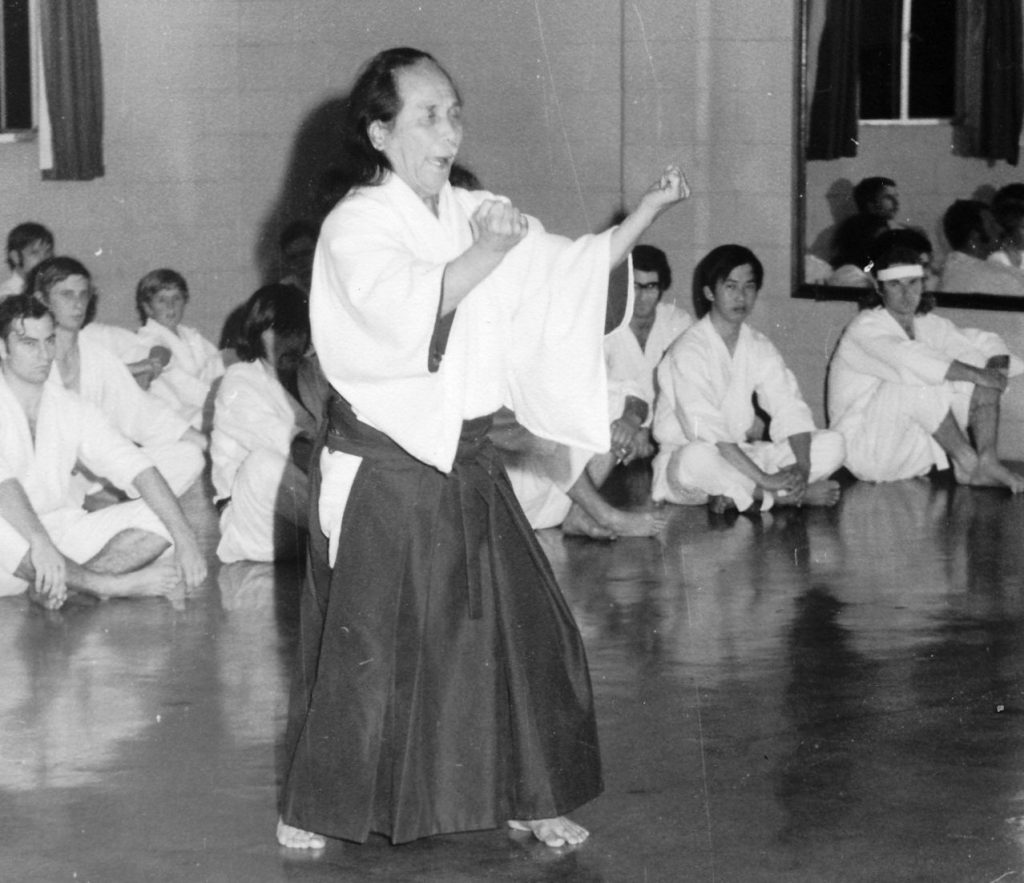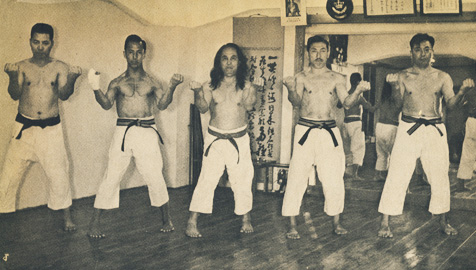 The origins of goju karate-do go back to the ancient travels of Buddhist monks throughout the Asian Frontier. Unarmed and oppressed, it became necessary for them to develop a weaponless form of self-defence for their survival. Merchants travelling south from China to the Ryukyu Islands; or Okinawa; brought with them this art of the “Chinese Hand” to To-De (later to be called Karate – empty hand).
The origins of goju karate-do go back to the ancient travels of Buddhist monks throughout the Asian Frontier. Unarmed and oppressed, it became necessary for them to develop a weaponless form of self-defence for their survival. Merchants travelling south from China to the Ryukyu Islands; or Okinawa; brought with them this art of the “Chinese Hand” to To-De (later to be called Karate – empty hand).
During this time, Japan invaded these islands and its warriors found themselves confronted by the fierce retaliation of skilled practitioners of this secret art. In the late 19th Century an enthusiastic Okinawan youngster by the name of Chojun Miyagi, became well skilled in the art and was determined to know more.
He was advised to travel to China to study the many different methods of martial arts. His search led him to the hard school of Shaolin Chuan, the soft school of Pakua Chan, and from these two he developed his own style of Goju, Hard and Soft. He advocated that both the hard and soft complimented each other and he created the Sanchin and Tensho, a formal exercise which combined both these elements.
“The word “goju” means hard-soft. Go is the Japanese word for hardness, and ju means softness. The system is based on an Oriental concept that all hardness and stiffness is not good. At the same time, all softness and too much gentleness can be harmful. The two should complement each other.”
Also featured in the style is the breathing exercise known as “Ibuki”, which incorporates external breathing – Yo Ibuki, a strong vocal hiss which emphasises dynamic tension, and internal breathing – In Ibuki; which is nasal and is performed with techniques. The use of this exercise creates deep abdominal development and rejuvenation of energy. The whole body is exercised both internally and externally. See the video of Gogen Yamaguchi below demonstrating this breathing.

A student of Chojun Miyagi, the Carpenter Murata, travelled to Japan and began to teach. One of his students was a young man who was agile, fast and had a reputation for being a deceptive fighter, giving no ground to any adversary.
He was known as the “Cat”, because of his favourite fighting stance – Neko Ashi Kamae (cat stance). His name was Gogen Yamaguchi. He soon proved to be a man of credibility and initiative and became highly respected in Karate circles in Japan.
Gogen Yamaguchi systemised the style into basically the system used all over the world today, and organised the style into what is known as the Goju Kai (Kai = Organisation).
From small beginnings the School of Goju Karate has grown and multiplied and is probably the most widely practiced of the styles in Australia. In May 1989, Kaicho Gogen Yamaguchi died aged 81. Tino Ceberano Hanshi having largely introduced and grown the development of Goju karate in Australia created the IGK to further practice and knowledge in this part of the world.